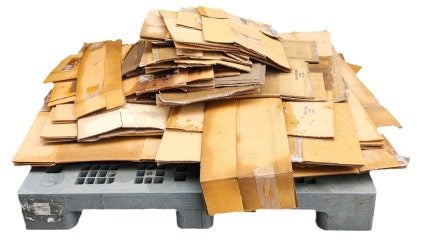
Efforts to reduce environmental impact are driving steady growth in the upcycled packaging materials market, according to a new report published by Market Research Future.
The study finds that demand for sustainable packaging solutions is increasing as brands respond to environmental, social and governance (ESG) goals and tightening global regulations.

Discover B2B Marketing That Performs
Combine business intelligence and editorial excellence to reach engaged professionals across 36 leading media platforms.
The report shows that upcycled materials—created from waste or by-products that would otherwise be discarded—are becoming more common across sectors such as food and beverage, cosmetics and e-commerce.
These materials are seen as a way to reduce reliance on virgin resources and minimise landfill waste, aligning with global sustainability standards and consumer expectations.
Regulations and corporate targets spur adoption
The market’s expansion is closely linked to growing regulatory pressure on packaging waste. Governments in the European Union, North America and parts of Asia are introducing stricter rules aimed at reducing single-use plastics and promoting circular economy practices.
These include mandatory recycled content targets and extended producer responsibility (EPR) schemes, which require companies to manage the lifecycle of their packaging.

US Tariffs are shifting - will you react or anticipate?
Don’t let policy changes catch you off guard. Stay proactive with real-time data and expert analysis.
By GlobalDataAt the same time, many corporations are setting ambitious ESG targets. According to the report, brands are increasingly turning to upcycled packaging to meet their commitments to reduce carbon emissions and improve sustainability performance.
This has led to a spike in demand for post-consumer materials and by-product repurposing technologies, especially in regions with established recycling infrastructure.
Food and cosmetics sectors lead the shift
The food and cosmetics industries are emerging as key adopters of upcycled packaging solutions. These sectors are under rising pressure from both regulators and environmentally conscious consumers to reduce their packaging footprint.
Brands are experimenting with fibres derived from agricultural waste, such as wheat husks and sugarcane pulp, to replace traditional plastic or paper-based packaging.
Retailers are also playing a role, with many introducing eco-friendly product lines and using packaging made from repurposed materials.
This shift is supported by growing consumer awareness of environmental issues and an increase in demand for transparent, sustainable supply chains.
Technological innovations support market growth
Innovation in materials science and recycling technology is helping scale up the use of upcycled materials in packaging.
Advances in processing techniques are improving the quality and durability of packaging made from waste products, making them more competitive with conventional materials.
The report highlights developments such as chemical recycling and smart sorting systems as critical enablers for wider adoption.
Market Research Future forecasts continued growth in the sector, with Asia-Pacific expected to see the fastest expansion due to rising industrial activity and government initiatives promoting sustainable practices.
Meanwhile, established markets in Europe and North America are likely to maintain steady demand driven by policy incentives and ESG-driven procurement strategies.
As regulatory frameworks evolve and sustainability pressures mount, the role of upcycled packaging in reducing environmental impact appears set to grow further across global supply chains.





